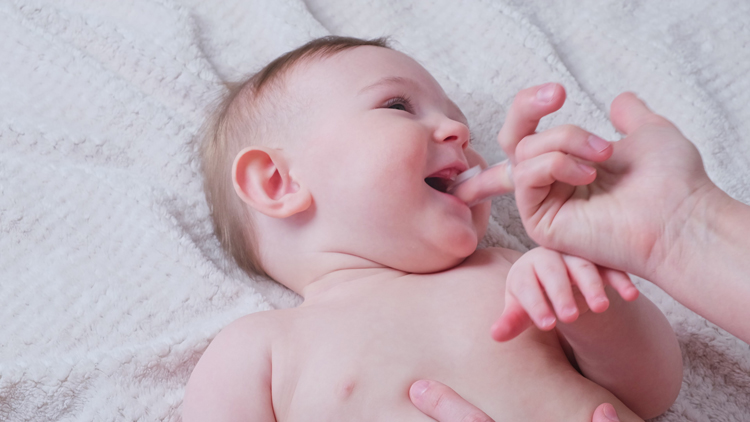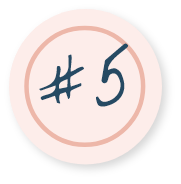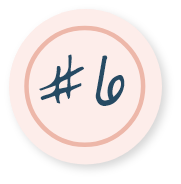
El cuidado de los dientes pequeños
- Home
- Live Well Blog
- El cuidado de los dientes pequeños
La dentición es un gran acontecimiento para los bebés. A algunos bebés les empiezan a salir los dientes hacia los 3-4 meses, mientras que a otros puede que no les salgan hasta los 6-12 meses o incluso un poco más adelante. Empezar a cuidar sus dientes a una edad temprana es una idea muy sensata para evitar problemas futuros, crear buenos hábitos y ayudarles a acostumbrarse a que les higienicen la boca.
La dentición es un GRAN acontecimiento.
Es importante cuidar los dientes de leche, aunque sean temporales. Los azúcares de la leche materna, la leche de fórmula y otros alimentos pueden provocar caries si no se limpian los dientes.
Las caries dentales pueden ser dolorosas y provocar problemas alimenticios y aumento de peso.
Esto es lo que puedes hacer para ayudar a cuidar esos pequeños dientes:


LIMPIA:
Después de cada toma, utiliza una toallita húmeda para limpiar suavemente las encías de tu bebé. Esto ayuda a eliminar cualquier residuo de leche o fórmula y bacterias.

CEPILLA:
Cuando le salga el primer diente a tu bebé, cepíllalo dos veces al día con un cepillo pequeño y un poco de pasta de dientes con flúor.

DIVIÉRTANSE:
A algunos niños no les gusta cepillarse los dientes. Intenta convertirlo en un juego, escuchar una canción o cepillarse juntos para que aprenda observándote.

SUPERVISA:
A medida que tu hijo crezca, ayúdale a intentar cepillarse los dientes por su cuenta. Asegúrate de que se limpia todas las zonas de la boca y sigue ayudándole hasta que pueda hacerlo bien por cuenta propia.



DENTISTA:
Lleva a tu hijo al dentista cuando le salga el primer diente. El dentista puede sugerir un tratamiento con flúor para prevenir las caries.

EVITA LAS CARIES:
Para prevenir la caries dentales perjudiciales:
- Evita darle bebidas o refrigerios azucarados.
- No dejes que tu bebé se duerma con el biberón.
- Cambia al vaso antes de que tu bebé cumpla un año.
- Limita el uso del chupete a los 2 años.